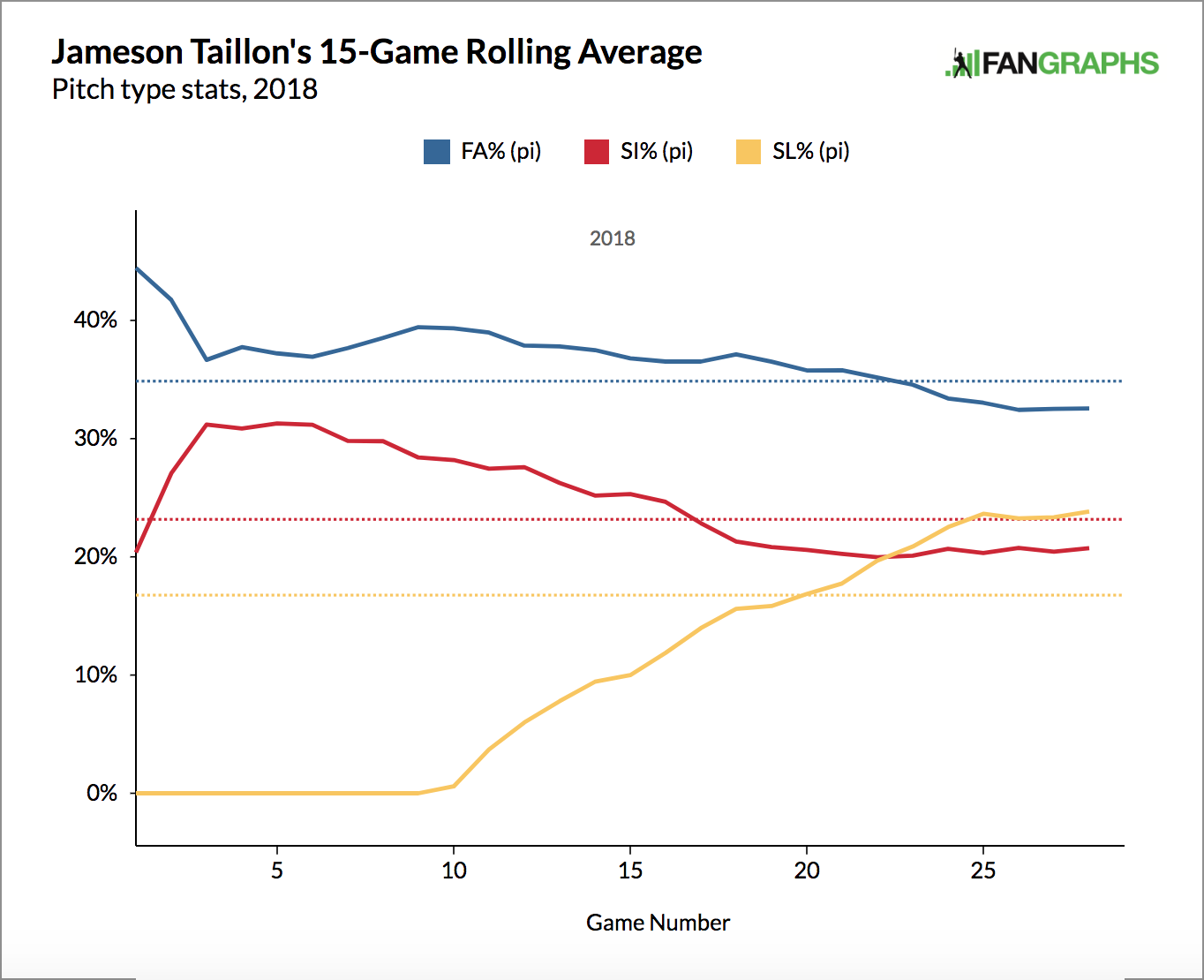Jameson Taillon has taken a step forward this year, lowering his ERA by about a full run. He is also striking more hitters out.
The most common way to show strikeouts is K/9 (strikeouts*nine/innings pitched). Last season, Taillon struck out 8.42 batters per nine innings, the league average starter rate was 7.96. Taillon was striking out 0.46 batters per inning more than the league.
This season, Taillon has struck out 8.34 batters per nine innings compared to the league average starter rate of 8.19. Taillon is striking out only 0.15 more batters per inning than the league. He is also striking out less batters per nine innings pitched than last year. However, he is striking out more batters this year than in the past.
How can this be? He’s simply facing less batters per inning and a result having a lower strikeout rate per nine. Here are his career rates and information:
Last season, Taillon faced 4.39 batters an inning to just 4.15 innings, a decrease of 0.24 batters per inning or 2.16 batters per nine innings. He’s been more efficient, making a K/9 comparison more difficult. What’s an inning?
Perhaps the best example of the flaw in K/9 is former Pirates starter Tyler Glasnow‘s last start. Glasnow struckout two batters in 0.7 innings, or a 27.0 K/9, which is the maximum. Appears that Glasnow struck out every batter because it ignores important context, batters faced. Glasnow faced 10 batters and only struck out two batters. Much worse.
If Glasnow faced five batters in 0.7 innings and struck out two, it would be much more of a better result than what he did. Using strikeouts per batter is a much better result, especially if the pitcher is being more efficient in the past each inning.
Back to Taillon, that’s where it comes into play. Taillon has struck out 152 of the 681 batters this season compared to 125 of 587. That’s a 22.3 percent strikeout rate compared to a 21.3 percent strikeout rate. Despite his K/9 decreasing, Taillon is striking out more batters that he faces this season, an important distinction because of context.
Outside of being more efficient in terms of batters per inning, Taillon has also increased his swinging strike rate by 2.3 percentage points, going from 8.2 percent last year to 10.5 percent this year. And his main pitches have seen a year over year bump.
From Brooks Baseball, these are Taillon’s whiff rates by pitch type at the big league level:
Taillon has actually his fourseam usage from 28.87 to 34.84, going less with the sinker. Pirates Breakdown contributor Nate Werner mentioned this in his piece about quantifying pitch usage:
In the situations where Taillon wants to throw his two seamer, by deviating to the four-seamer or using the “lower-ceiling-higher-floor” valued slider and curve, Taillion could improve his overall outcomes by a few fractions of a run per pitch.
Using Fangraph’s 15 game rolling averages, Taillon did exactly that. Going more to the slider than sinker as the season goes on:
The other increase that is noticeable is the curveball, increasing the whiff percentage by 1.87 percentage points. His curveball is his best breaking ball, not so surprisingly given that he had a future value of 60 on the pitch the last time he was a prospect.
Despite Taillon’s decrease in K/9, he’s actually striking more batters out than he was last season because of his ability to be more efficient in batters that he’s facing per inning in 2018. He’s also seen his swinging strikeout rate increase in part because of the lower usage in the sinker/two-seam and developing the slider. Using rates over per nine innings provides for more accurate information.
Add The Sports Daily to your Google News Feed!










